Korean fir "Diamond": description of the variety, planting and care rules
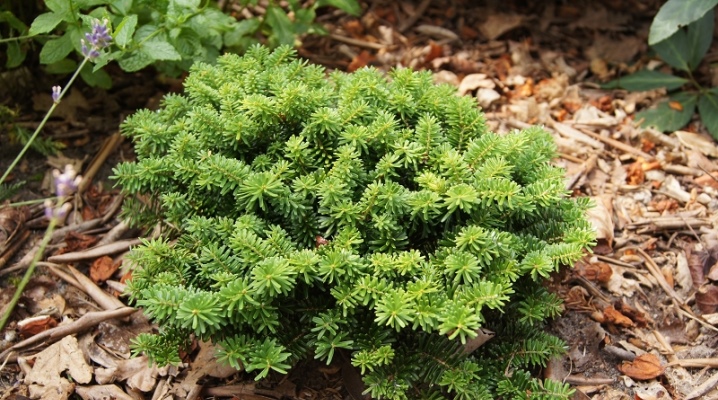
Korean fir "Diamond" is a miniature coniferous tree. Due to its high decorative qualities, it is often used to create original landscape ensembles in combination with shrubs, flowers and evergreen trees. In addition, fir can be used as a Christmas tree. It does not hurt to learn more about the features of this beautiful plant, as well as about the rules for caring for it.
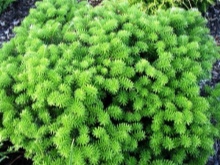
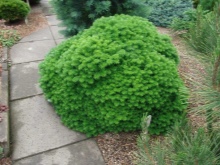

Description of the variety
Natural areas of growth of balsam fir "Brilliant" - Canada and the northern part of the American continent. Little fir belongs to the pine family and is a winter-hardy plant. The balsamic tree is called because of the delicate and pleasant coniferous smell that it exudes.
The features of decorative culture should definitely be known to those who plan to design their plots with its help.
- The fir grows in height by only 0.5 m, while having a crown diameter of up to 0.7-0.8 m. It is easy to guess that with such dimensions, its shape resembles a slightly flattened hemisphere or ball. However, trees are sometimes pyramidal or cone-shaped.
- The plant has a smooth gray bark without visible grooves or folds.
- On fir twigs, the needles are planted tightly and densely, its soft needles reach a length of 2 cm and are bent at the edges. The outer side of the needles is bright green, and the bottom is covered with silver-blue lobe stripes.
- A special decorative element of fir is its vertically growing cones in the form of candles. Young plants are adorned with dark purple and bluish-green fruits, adult specimens have deep brown cones.
- Even a mature plant has a developed root system of compact size, and this makes it possible to grow it in large pots, flowerpots and tubs.
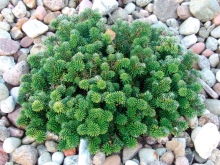

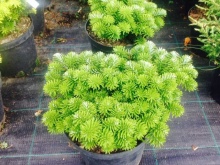
Dwarf balsam fir grows very slowly, its growth gain per year is no more than 4 cm, but its lifespan is about 300-400 years. The plant is cultivated in regions and areas with different climates, however, in the north, on the eve of winter, it should be covered.
It should be added that the tree has a high resistance to most diseases, but, of course, the condition of the fir, first of all, depends on normal care.
For decorative purposes, the fir "Brilliant" is used quite widely. Alpine slides, coniferous ensembles, flower beds and rock compositions are decorated with a miniature tree. A culture planted in a group along curbs and fences looks spectacular, as well as a container plant that adorns front entrances, terraces and loggias.
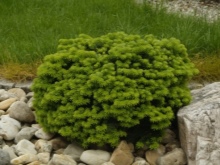
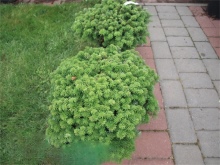

How is the landing carried out?
Only high-quality plants are suitable for planting, to which the following requirements are imposed:
- the age of the seedling is 4–10 years;
- plant length - from 20 to 25 cm;
- the bush should have branches with green needles without suspicious spots and dried needles, with bark without signs of rot and cracks;
- for container firs, an earlier age is provided - 1–2 years, and an earthen lump on the roots is required.
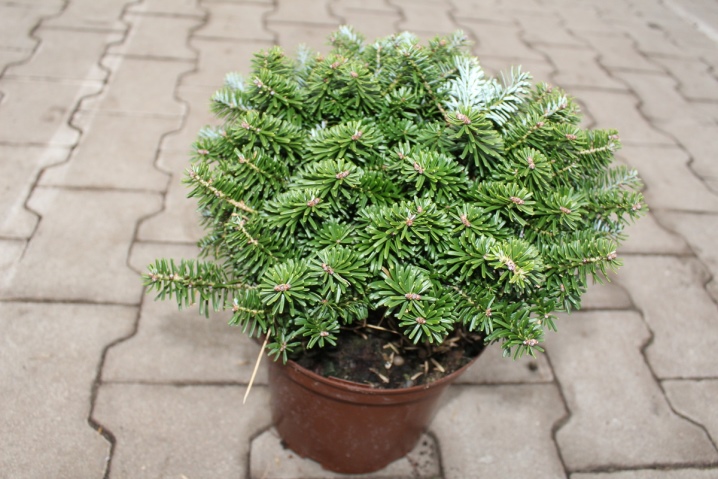
The speed of its growth, attractive appearance and long-term viability depend on how carefully the ephedra is chosen.
Fir should be planted in mid-spring (in late April or early May), when the soil is warmed up to at least +10 degrees, and the air temperature does not drop below +13 degrees.
For “Brilliant” fir, it is necessary to choose open areas with good lighting and moderately dry soils, in which water does not stagnate. If there is a risk of waterlogging, then it is necessary to provide an optimal drainage layer for the tree by adding expanded vermiculite with a layered structure as a baking powder or coarse sand to the soil. You will need 2 buckets of mineral product per square meter. Since the ephedra prefers high acidity, the planting site is covered with high-moor peat (up to 20 kg per square meter).
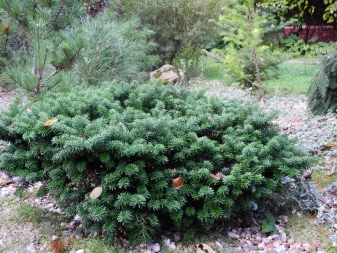

The planting process consists of several stages.
- 15 days before planting, a square planting hole is prepared with a diameter of 50 cm and a depth of 60–80 cm (depending on the size of the root system with a clod of earth). Planting a group of plants requires maintaining a distance between trees of 5 m, between their rows - up to 4 m.
- You need to pour 12.5 liters of water into the pit, then drainage is placed in it: gravel, crushed stone, pebbles or fragments of brick.
- The nutrient substrate, which needs to be filled in 1/2 of the pit, consists of equal portions of sand, sod land and sour peat, some add sawdust to it. You also need to apply 200 grams of fertilizer - "Nitrofoska" under one plant.
- A warm, cloudy or rainy day is chosen for planting.
- The seedling is lowered into the ground in an upright position. Its roots are straightened, and the root collar is left above the surface of the soil, the hole is covered with the remaining nutrient mixture, tamped to avoid voids, compacted at the trunk and leveled.
- After planting, water the roots using at least 10 liters of warm water.
- Drying of the soil can be prevented by mulching the surface under the bush with wood chips, peat, pine bark, which has disinfecting properties.

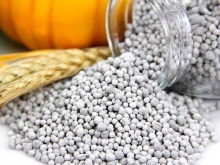
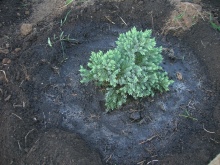
Thanks to the small root system, a slow-growing tree can be planted in a tub of a suitable size by making several holes in it and carrying out a similar drainage with pebbles and pieces of expanded clay. The composition of the soil corresponds to the composition of the substrate for soil planting.
Care advice
It doesn't matter if the young fir is planted in a container or in the ground, it needs to be looked after. In order to grow a strong and beautiful tree, it is recommended that novice gardeners adhere to several important requirements.
- At first, the seedlings are shaded with a non-woven covering material or burlap during the hours of intense sun.
- Regular watering of the soil to moisten the top layer of the earth should be carried out once every 2 weeks, including dry days. This applies to young specimens, adult firs are watered only 4 times during the entire growing season.
- It is necessary to make top dressing 3 years after planting. These are mineral formulations containing three main components: phosphorus, potassium and nitrogen. For 1 sq. m will need 120 grams of funds.
- Before watering and after this procedure, the soil of the near-trunk circle is loosened, and after irrigation it is sprinkled with coniferous sawdust and peat.
- Weeds are removed when they appear, preventing overgrowth. This prevents the appearance of pests.
- Fir is susceptible to attack by aphids, leafworms and hermes. In order to prevent infection, trees are sprayed with insecticidal preparations "Rogor" and "Antio" in the spring.
- Periodic inspection of the culture will prevent the appearance of fungal diseases, in which the needles of the tree turn yellow, dry and crumble. The best remedy for prevention is copper sulfate in the form of a solution. At the first sign of rust, the affected branches should be removed.
- Such a natural dwarf as "Diamond" needs periodic decorative pruning. To do this, pinch the buds that form at the top of the branches. It is customary to do this in the spring. Also, in the spring and autumn, you need to cut off improperly growing, broken and diseased shoots.
- Preparation for winter consists in abundant watering, mulching, covering the soil under fir spruce branches. Then the bushes are covered with burlap, leaving gaps for fresh air to enter.
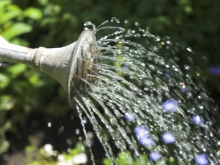
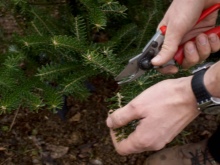
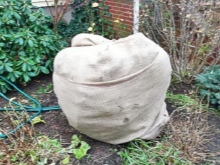
In the spring, with the onset of warm days, you should continue to hide young fir from ultraviolet radiation and moisturize the crown in a small amount.
Breeding balsam fir
Ephedra can be propagated in two known ways. An uncomplicated method is rooting cuttings that are harvested in April.
- The material is taken from annual branches with an apical bud.
- The needles in the lower part are removed, the cutting is soaked in a growth biostimulator and planted at an angle of 45 degrees in a pot with a nutrient mixture.
- Next, you should cover the container with a film, creating a greenhouse environment for the plant.
- He will also need daily ventilation and moistening of the earth.
- Seedlings take root in late summer. After that, you can clean the greenhouse, temper small firs and plant them in open ground in the fall.

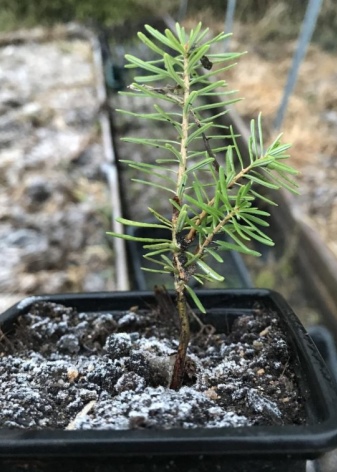
Fir can also be planted using the seed method; the cones of adult trees (aged 8 years and older) are suitable for this. They are harvested unripe, dried and the seeds are taken out. Before planting, it is necessary to withstand the planting material in a solution of potassium permanganate, hold it in water until it swells and, placing it in a well-moistened sandy soil, send it to a cold place.
Seeds can be planted in autumn or early spring (in March) in the soil based on humus, clay and sand with wood chips poured over it. The construction of a film shelter for seeds is imperative for the seedlings to sprout. After that, regular irrigation and feeding will be required.



In general, gardeners rarely use this method because of its laboriousness - it is much easier to cut a crop.
Due to its beauty, miniature size and slow growth, the “Brilliant” fir is a popular, almost rare crop that is in great demand among gardeners all over the world.
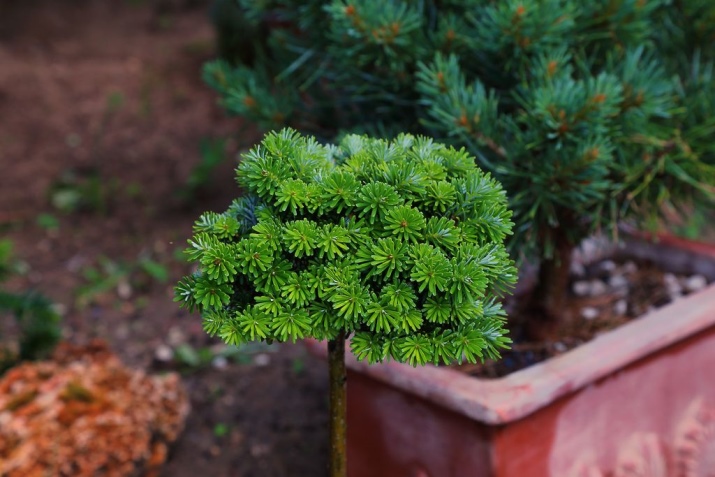
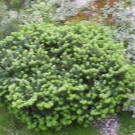
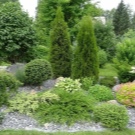
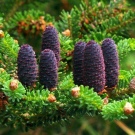
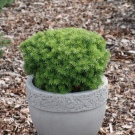
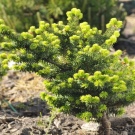
For more information on this fir, see the next video.



































































The comment was sent successfully.